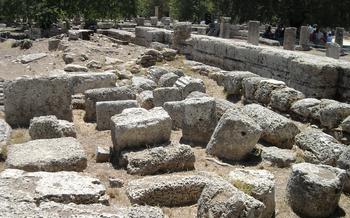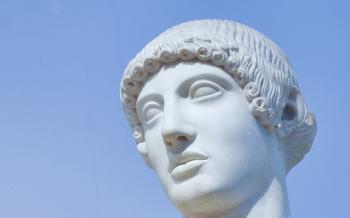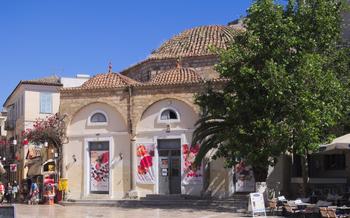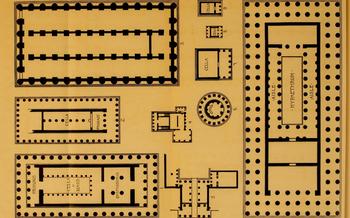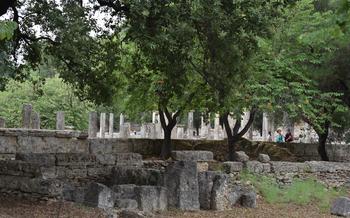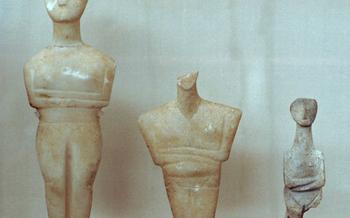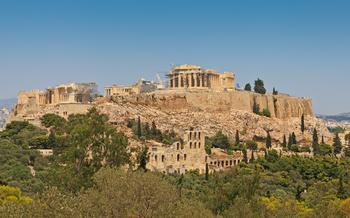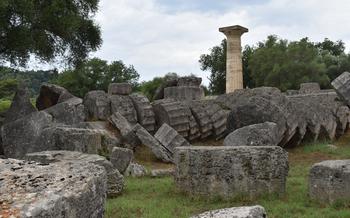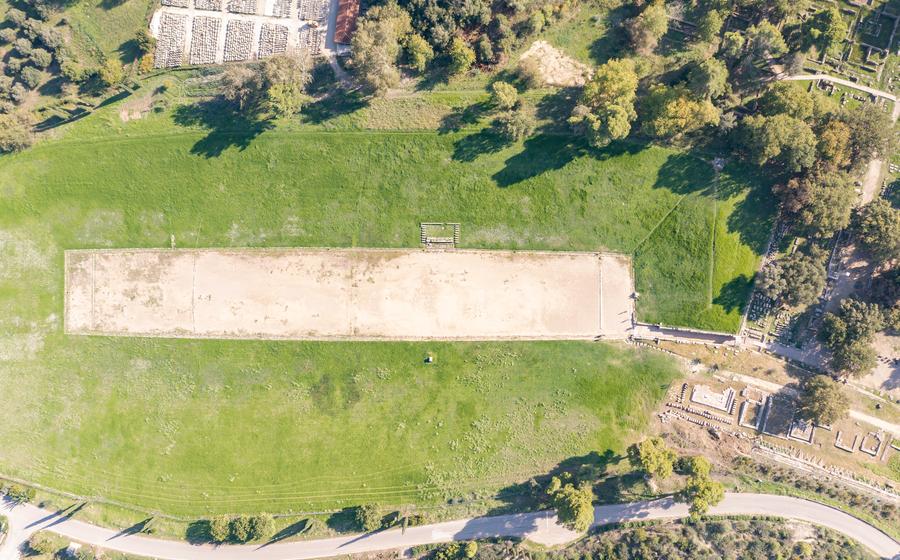
Ancient Figaleia
- A Journey to Ancient Arcadia: Unveiling the Enigmatic Figaleia
- The Legendary Temple of Apollo Epikourios: An Architectural Masterpiece
- Figaleian Sculptures: A Showcase of Classical Masterpieces
- Exploring the Ancient City: Beyond the Temple
- Figaleia's Connection to the Peloponnesian Wars
- Figaleia in Greek Mythology and Literature
- Figaleia's Contribution to the Olympic Games
- Figaleia's Economic Foundations
- Figaleia's Social and Cultural Life
- Figaleia's Legacy in Modern Greece
- Figaleia's Enduring Impact on Western Civilization
- Planning Your Visit to Figaleia: Essential Tips
- When to Visit Figaleia: Weather and Seasonal Considerations
- Things to See and Do Near Figaleia: Beyond the Ancient City
- Insider Tip: Unveiling Figaleia's Hidden Gem
A Journey to Ancient Arcadia: Unveiling the Enigmatic Figaleia
In the heart of ancient Arcadia, nestled amidst picturesque landscapes, lies the enigmatic city of Figaleia. A journey to Figaleia is a journey back in time, to an era where myths and history intertwine, and ancient ruins whisper tales of a glorious past. The city's origins shroud themselves in mystery, with legends tracing its foundation to the mythical figure of Phigalus, son of Lycaon. Throughout antiquity, Figaleia stood as a proud and independent city-state, playing a significant role in the politics and culture of the Peloponnese. Its strategic location, at the crossroads of important trade routes, further enhanced its prominence.
Figaleia's rich history is revealed through the numerous archaeological excavations conducted over the centuries. These excavations have unearthed an array of treasures, including well-preserved temples, fortifications, residential areas, and public buildings. Among these discoveries, the most remarkable is the Temple of Apollo Epikourios, a stunning architectural masterpiece that has captivated the world with its exceptional beauty and intricate sculptures.
Reaching Figaleia is relatively easy, with various transportation options available. Visitors can opt for a scenic drive through the Peloponnesian countryside or utilize public transportation from nearby cities. The archaeological site is open to the public during specific hours, allowing visitors to explore its wonders at their leisure.
The Legendary Temple of Apollo Epikourios: An Architectural Masterpiece
The Temple of Apollo Epikourios stands as a testament to the architectural prowess of ancient Greece. Dedicated to Apollo, the god of healing, this remarkably preserved temple showcases exceptional craftsmanship and a unique architectural style. Its iconic columns, intricate sculptural decorations, and well-preserved roof have earned it a place among the finest examples of classical Greek architecture.
The temple's historical significance is equally profound. Built in the 5th century BC, it represents a transitional period in Greek architecture, blending elements of the Doric and Ionic orders. Its innovative design and exceptional preservation provide valuable insights into the evolution of architectural styles and techniques during this transformative era.
Ongoing restoration efforts are meticulously undertaken to protect and restore the temple for future generations. These efforts involve careful conservation techniques, structural reinforcement, and the preservation of its exquisite sculptural details. By safeguarding this architectural masterpiece, we ensure that its legacy continues to inspire and captivate visitors for centuries to come.
The Temple of Apollo Epikourios not only holds religious significance but also serves as a symbol of cultural exchange and artistic influence. Its distinctive features and exceptional preservation have made it a source of inspiration for subsequent architectural developments throughout the ancient world and beyond. Its enduring impact on Western civilization highlights the enduring legacy of ancient Greek architecture and its profound influence on the development of global architectural traditions.
Figaleian Sculptures: A Showcase of Classical Masterpieces
Figaleia's most renowned contribution to ancient Greek art lies in its exceptional sculptures, which adorned the Temple of Apollo Epikourios. The west frieze, a masterpiece of narrative relief, depicts the epic battle between the Greeks and the Amazons, showcasing intricate details and dynamic compositions. The east frieze, equally impressive, portrays the mythical struggle between the Lapiths and the Centaurs, capturing the essence of the mythological world.
In addition to these iconic friezes, Figaleia yielded numerous other sculptures, including statues, reliefs, and architectural ornaments. These works demonstrate the exceptional craftsmanship and artistic prowess of Figaleian sculptors, who played a significant role in shaping the development of classical Greek art. The sculptures' expressive figures, intricate drapery, and harmonious proportions exemplify the mastery and refinement achieved by ancient Greek artists.
The Figaleian sculptures stand as a testament to the artistic achievements of this ancient city and continue to captivate visitors with their beauty, narrative power, and technical virtuosity. They offer a glimpse into the rich artistic traditions of ancient Greece and provide valuable insights into the mythological and religious beliefs of the Figaleians.
Exploring the Ancient City: Beyond the Temple
Beyond the magnificent Temple of Apollo Epikourios, the ancient city of Figaleia offers a wealth of captivating sights and structures that provide a glimpse into the daily lives of its inhabitants. Explore the remnants of Figaleia's impressive fortifications and walls, which once protected the city from invaders. Discover the residential areas, where you can imagine the bustling streets and homes of Figaleian families.
Unearth the secrets of Figaleia's public buildings, which served as centers of civic administration and justice. Marvel at the innovative water management system that supplied water to the city, showcasing the engineering prowess of the ancient Greeks. As you wander through the ruins of Figaleia, let your imagination transport you back in time to experience the vibrant atmosphere of this ancient city.
Figaleia's Connection to the Peloponnesian Wars
Figaleia's strategic location in the Peloponnese made it a key player in the Peloponnesian Wars, a series of conflicts between Sparta and Athens that spanned nearly three decades. The city's alliances shifted throughout the wars, as it sought to protect its interests and maintain its autonomy.
Initially, Figaleia aligned itself with Sparta, a natural alliance given their shared Dorian heritage. However, as the war progressed and Sparta's power grew, Figaleia began to fear for its independence. In 420 BC, it switched sides and joined the Athenian alliance, hoping to gain protection from Spartan aggression.
This decision proved costly for Figaleia. In 418 BC, Spartan forces invaded the city and razed it to the ground, reducing it to ruins. The destruction of Figaleia sent a clear message to other Peloponnesian cities: Sparta would not tolerate dissent or challenges to its authority.
The Peloponnesian Wars had a devastating impact on Figaleia. The city's population was decimated, its economy was shattered, and its urban development was set back by centuries. It took decades for Figaleia to recover from the destruction, and the scars of the war remained visible for generations.
Despite the hardships it faced, Figaleia's strategic importance ensured that it would eventually rise again. In the centuries that followed, the city was rebuilt and repopulated, and it once again became a thriving center of commerce and culture.
Figaleia in Greek Mythology and Literature
Figaleia's history is deeply intertwined with Greek mythology and literature, adding a rich layer of cultural significance to the ancient city. According to myths, Figaleia was founded by Phigalus, a son of Lycaon, the legendary king of Arcadia. The city's name is derived from Phigalus, further emphasizing its mythical origins.
References to Figaleia can be found in various ancient Greek literary works. Homer, in his epic poem the Iliad, mentions Figaleia as one of the cities that sent troops to fight in the Trojan War. Pausanias, a renowned Greek traveler and geographer, provides detailed descriptions of Figaleia in his book "Description of Greece," shedding light on its history, mythology, and monuments.
Figaleia's mythological associations extend beyond its founding myth. The city was closely connected to the worship of Artemis, the goddess of hunting and wilderness. According to legend, Artemis had a sanctuary in Figaleia, where she was revered by the local population. The presence of Artemis in Figaleian mythology highlights the city's connection to nature and the surrounding environment.
Exploring Figaleia's mythological and literary connections offers a deeper understanding of the city's cultural significance and its place within the broader tapestry of ancient Greek history and literature. These references provide valuable insights into the beliefs, traditions, and values of the Figaleians, enriching our knowledge of this remarkable ancient city.
Figaleia's Contribution to the Olympic Games
Figaleia's proximity to Olympia, the renowned sanctuary of Zeus and the birthplace of the Olympic Games, played a significant role in shaping its cultural identity and religious practices. The city's involvement in the Olympic Games extended beyond mere participation, as Figaleians actively contributed to the organization and officiating of these prestigious events.
Figaleian athletes competed in various Olympic disciplines, showcasing their skills and striving for glory. Their achievements brought honor to their city and reinforced its reputation for athletic prowess. Additionally, Figaleians served as officials, ensuring the fair conduct of the games and upholding the sacred traditions associated with this ancient festival.
The Olympic Games provided a platform for cultural exchange and interaction between Figaleia and other Greek city-states. Athletes, officials, and spectators from across the Hellenic world converged in Olympia, fostering a sense of unity and shared cultural heritage. This exchange of ideas and customs contributed to the dissemination of artistic styles, religious beliefs, and philosophical concepts throughout the Greek world.
Figaleia's involvement in the Olympic Games underscores its deep connection to the religious and cultural fabric of ancient Greece. The city's athletes, officials, and spectators played an integral role in perpetuating the Olympic tradition and contributing to its enduring legacy as a symbol of excellence, sportsmanship, and cultural harmony.
Figaleia's Economic Foundations
Figaleia's prosperity was built on a solid foundation of agricultural wealth. The fertile plains surrounding the city were ideal for growing a variety of crops, including wheat, barley, and olives. Figaleia's farmers also raised sheep and goats, providing wool and meat for the city's population. In addition to agriculture, Figaleia was a center of trade and commerce. Its strategic location on the trade routes between the Peloponnese and the rest of Greece made it a natural hub for the exchange of goods. Figaleia was also home to a number of industries, including pottery, metalworking, and textile production. These industries produced a variety of goods that were sold both locally and throughout the region. As a result of its agricultural wealth, trade, and industry, Figaleia became one of the most prosperous cities in ancient Arcadia.
Figaleia's Social and Cultural Life
Figaleia's society was intricate, with various social classes coexisting within the city walls. The elite, comprising wealthy landowners and prominent families, held significant influence in political and economic matters. The middle class consisted of merchants, artisans, and skilled workers who contributed to the city's economic prosperity. At the base of the social pyramid were the laborers, farmers, and slaves who formed the majority of the population and played a crucial role in maintaining the city's infrastructure and agricultural production.
Religious rituals and festivals were an integral part of Figaleian life, honoring various deities and celebrating important events in the city's history. The most significant religious festival was the one dedicated to Apollo Epikourios, held annually at the temple. This festival attracted visitors from neighboring cities and provided an opportunity for cultural exchange and interaction.
Figaleia placed great importance on education, with a focus on intellectual pursuits and philosophical discussions. The city had its own educational institutions, where students studied subjects such as literature, philosophy, mathematics, and music. Philosophical ideas, particularly those of the Stoic and Epicurean schools, had a profound influence on Figaleian society, shaping ethical and moral values among its citizens.
Artistic expression flourished in Figaleia, finding its voice in various forms. Sculpture, painting, and theater were highly regarded, and local artists created remarkable works that adorned public spaces and private homes. Figaleia's sculptures, in particular, showcased the exceptional skills of its artisans and contributed significantly to the development of classical Greek art.
Figaleia's Legacy in Modern Greece
Figaleia's legacy extends far beyond its ancient ruins, leaving a lasting impact on modern Greece. Archaeological research continues to uncover new insights into Figaleia's past, shedding light on its rich history and significance. The preservation and restoration of its archaeological remains ensure that future generations can appreciate and learn from this ancient city. Figaleia's cultural heritage is deeply intertwined with the identity of modern Greece, inspiring contemporary artistic and literary interpretations that keep its legacy alive. Additionally, the potential for sustainable tourism development in the region offers an opportunity to share Figaleia's story with the world while promoting economic growth.
Figaleia's Enduring Impact on Western Civilization
Figaleia's legacy extends far beyond its physical remains and into the realm of cultural and intellectual history. The architectural innovations showcased in the Temple of Apollo Epikourios left a lasting impression on subsequent architectural developments in Greece and beyond. Its unique design and exceptional preservation have made it a valuable source of inspiration for architects and scholars alike.
The artistic legacy of Figaleia is equally significant. The exquisite sculptures adorning the temple, particularly the west and east friezes, have been hailed as masterpieces of classical Greek art. Their intricate details, dynamic compositions, and narrative power have influenced the development of sculpture throughout the Mediterranean region. The Figaleian sculptures have been widely studied and admired, serving as models for artists and contributing to the broader evolution of Western art.
Moreover, Figaleia played a crucial role as a center of cultural exchange. Its strategic location and participation in the Olympic Games facilitated interactions with other Greek city-states, leading to the dissemination of ideas, knowledge, and artistic influences. Figaleia's contributions to the cultural tapestry of ancient Greece cannot be overstated.
In terms of historical significance, Figaleia's story is deeply intertwined with the narrative of ancient Greece. Its involvement in the Peloponnesian Wars, its religious significance as a sanctuary of Apollo, and its participation in the Olympic Games all contribute to its importance in understanding the complexities of ancient Greek civilization. Figaleia's legacy endures as a testament to the richness and diversity of the ancient world.
Planning Your Visit to Figaleia: Essential Tips
Transportation:
Figaleia is conveniently accessible by car, with well-maintained roads connecting it to major cities in the Peloponnese. For those without their own vehicle, regular bus services operate from Athens and Kalamata. Once in Figaleia, the archaeological site is within walking distance from the town center.
Accommodation:
A range of accommodation options is available in and around Figaleia, catering to different budgets and preferences. Visitors can choose from traditional guesthouses, charming hotels, and modern resorts.
Dining:
Figaleia offers a variety of dining options, from traditional tavernas serving local delicacies to modern restaurants with international cuisine. Be sure to sample regional specialties such as grilled meats, fresh seafood, and delicious pastries.
Guided Tours:
Guided tours of the archaeological site are highly recommended. Knowledgeable guides provide insights into Figaleia's history, architecture, and significance, enhancing the visitor experience. Tours can be arranged through local tour operators or booked in advance online.
When to Visit Figaleia: Weather and Seasonal Considerations
Timing your visit to Figaleia is crucial for a rewarding experience. While the site is accessible year-round, the best time to visit is during the shoulder seasons, namely spring (April-May) and autumn (September-October). These periods offer pleasant weather with moderate temperatures, ideal for outdoor exploration and avoiding the summer crowds.
Summer (June-August) can be hot and dry, with temperatures often exceeding 35 degrees Celsius. While the site remains open during this time, it's advisable to plan your visit early in the morning or late in the afternoon to avoid the scorching heat. Additionally, summer attracts more tourists, leading to busier crowds and potentially longer queues.
Winter (November-March) brings cooler temperatures and occasional rainfall. While the site remains open, some areas may be inaccessible due to weather conditions. However, this season offers a unique opportunity to experience Figaleia's ancient ruins in a tranquil and serene atmosphere, free from the summer throngs.
Things to See and Do Near Figaleia: Beyond the Ancient City
Figaleia's surroundings are a treasure trove of hidden gems waiting to be discovered. Ancient Olympia, the birthplace of the Olympic Games, lies just a short distance away, offering a glimpse into the sacred grounds where athletes competed for glory and honor. The Temple of Zeus, with its awe-inspiring Statue of Zeus, is an architectural marvel that leaves visitors in awe.
Bassae, another nearby archaeological site, boasts the remarkably preserved Temple of Apollo Epicurius, a UNESCO World Heritage Site. Surrounded by breathtaking natural scenery, this temple is a testament to the architectural prowess of ancient Greece.
For nature enthusiasts, the Lousios Gorge provides a stunning backdrop for hiking and exploration. With its towering cliffs, lush vegetation, and crystal-clear waters, the gorge offers a serene escape into the wilderness.
Quaint villages dot the landscape near Figaleia, each with its own unique charm. Andritsaina, with its traditional stone houses and cobblestone streets, offers a glimpse into rural Greek life. Stemnitsa, known for its well-preserved mansions and Byzantine churches, is another must-visit destination.
Don't miss the opportunity to savor the region's culinary delights. Sample the local specialties at traditional tavernas, where you can indulge in mouthwatering dishes prepared with fresh, seasonal ingredients.
With its rich history, stunning scenery, and authentic Greek experiences, Figaleia and its surroundings offer an unforgettable journey through time and culture.
Insider Tip: Unveiling Figaleia's Hidden Gem
Beyond the well-trodden paths of Figaleia's archaeological site, there lies a hidden gem waiting to be discovered. Tucked away amidst the ruins, this secret spot offers a unique perspective and a sense of discovery that will leave you spellbound.
To find this hidden gem, keep an eye out for a discreet path that leads off the main trail. Follow it, and you'll soon be rewarded with a breathtaking view of the temple from a different angle. The surrounding landscape, with its rolling hills and lush vegetation, creates a picturesque backdrop that will transport you back in time.
This hidden spot is the perfect place to soak in the atmosphere of ancient Figaleia and let your imagination run wild. Picture the temple in its prime, with worshippers gathering to pay homage to Apollo Epikourios. Imagine the bustling streets of the ancient city, filled with merchants, artisans, and philosophers engaging in lively debates.
As you explore this hidden gem, remember to tread lightly and respect the sanctity of the archaeological site. Take your time to absorb the beauty and history that surrounds you, and capture the moment through photographs that will serve as lasting memories of your visit to Figaleia.
Remember, this secret spot is a privilege to experience, and it's our collective responsibility to preserve it for future generations. Handle the ruins with care, stay on designated paths, and avoid disturbing the delicate ecosystem. By respecting the site and sharing your experiences responsibly, you'll help ensure that Figaleia's hidden gem remains a source of wonder and inspiration for years to come.
